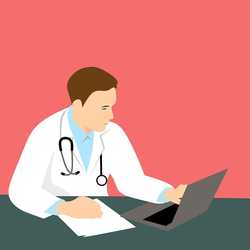
Medical professionals often conceal treatment errors rather than admit their mistakes. This places patients at significant risk of injury or death and makes it difficult to determine corrective actions that can restore the patient’s health. When physicians, surgeons, nurses, and other medical professionals conceal errors, they deliberately place their professional reputation above their duty to protect patient health and safety.
The Prevalence of the Problem
Medical errors are a leading cause of death in the United States. Each year, hundreds of thousands of patients die due to medical errors that occur in hospitals, outpatient surgical centers, physician’s offices, ambulances, etc. In 2018, researchers at Johns Hopkins University placed the number of patients who died as the result of medical errors at nearly 250,000. This makes it the third leading cause of death in the United States.
Surveys taken in 2014 established that approximately 7% of physicians believe it is acceptable to conceal errors from patients, and a further 14% feel that this is acceptable depending on the circumstances. Alarmingly, only 78% of physicians believe that such behavior is never acceptable.
One of the most significant side-effects of the problem of concealing medical errors is that it limits the ability of patients to make informed healthcare decisions. Widespread concealment of errors means that many critical events are not properly recorded. As a result, it means that patients could unknowingly sign themselves up for treatment within facilities, and under the care of physicians, who have a history of harming patients and hiding the evidence of their negligence.
Common Medical Errors
Poor communication is the most dangerous and most common medical error. This includes failure to convey a patient’s underlying health conditions, improperly recording patient data, and failing to adequately track the treatment administered to a patient.
Communication errors can lead to misdiagnosis. Misdiagnosis can result from failing to order the appropriate tests, misinterpretation of diagnostic results, failure to recognize symptoms of the condition, etc. Misdiagnosis errors can have fatal consequences and it is common for medical professionals to go to great lengths to attribute this error to other causes and other people.
Similarly, medication errors are equally as hazardous as misdiagnosis. Medication mistakes can include prescribing the wrong medication, prescribing the wrong dosage, failing to account for drug interactions, etc. In 2006, it was estimated that nearly 1.5 million Americans suffered these types of medication errors.
Improper treatment is a common error that can include everything from wrong-site surgery to failure to treat an underlying health condition using established treatment guidelines. It can also include prescribing “alternative” therapies with unknown and unproven results.
Failure to adhere to hospital protocols or established care guidelines is another common error. These type of errors can include failure to follow disinfection guidelines, inadequate documentation of treatment protocols, and failure to monitor a patient’s health at any stage during the treatment process.
Technology Could Reduce Errors (& Limit Concealment)
Advancements in computers and the way health information is processed and stored could reduce the incidence of medical errors. These technologies can clearly establish what treatments are provided, what tests are ordered, what medications are administered, etc. More importantly, they clearly identify the individuals responsible for every action and treatment along the way. Widespread adoption of such systems which are currently available could significantly reduce the numbers of errors that are concealed.
More effective use of technology also benefits patient safety in that the records can be reviewed to identify recurring hazards and implement corrective actions.
Proactively Protecting Against Errors
Patients can protect themselves against errors by asking lots of questions before, during, and after treatment. Patients should have a thorough understanding of the benefits, side-effects, and expected outcomes.
Similarly, patients should always secure a second opinion. This helps minimize the risk of misdiagnosis or missed diagnosis. Only when a diagnosis is confirmed should a patient pursue a particular course of treatment.
Finally, patient’s should always have an advocate watching out for them. This can be a family member, friend, trusted individual who can ask questions and process information. This is crucial as it can minimize the risk of miscommunication.
Pursuing Medical Errors
Patients in Illinois have two years to file a medical malpractice claim against the individual(s) or entities liable for their injury. This clock begins ticking as soon as the patient knows, or should know, that an error has occurred. However, the statutes do make exceptions for cases where the individual’s Chicago medical malpractice lawyer can establish that the medical professional deliberately concealed their negligence.
A Chicago medical malpractice lawyer must have evidence to pursue a claim. This can include medical records, eyewitness statements, photographs, receipts, and a wide variety of evidence that establishes the fault of the physician, nurse, surgeon, etc. responsible. In many cases, the act of concealing a medical error involves multiple parties.

